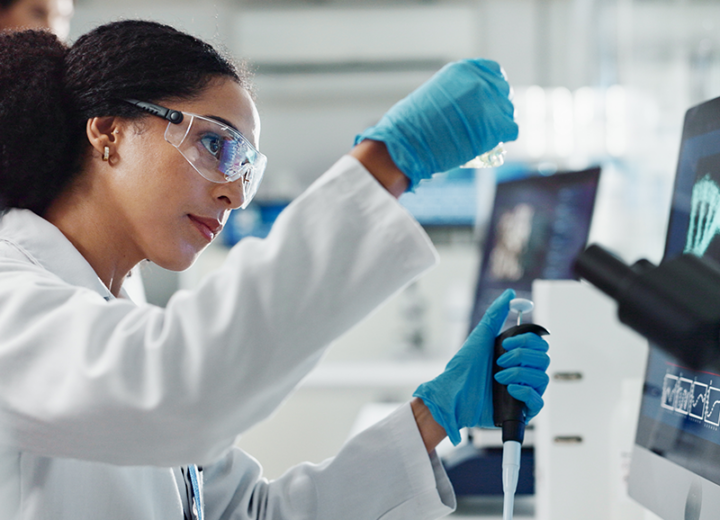11 October 2024
Comparing bio-fermentation to CrisBio® for pyrophosphatase

For years, bio-fermentation has been the go-to method for producing enzymes like pyrophosphatase. It’s a tried-and-true process that’s widely used in the life sciences industry.
Plus, this method is scalable and can produce large quantities of enzymes. But, it’s not without its limitations, especially when dealing with more complex enzymes. That’s where Cocoon Bioscience comes in with a unique approach.
While bio-fermentation occurs in large fermentation tanks, the CrisBio® platform uses cocoons as natural bioreactors. In this blog, we’ll break down both methods and show why CrisBio® is better suited for faster, more scalable and more cost-effective enzyme production.
What is pyrophosphatase?
Pyrophosphatase is an enzyme that catalyzes the hydrolysis of inorganic pyrophosphate. This reaction is critical in many biological processes, such as in gene sequencing and in vitro transcription.
Without pyrophosphatase, inorganic pyrophosphate would accumulate and disrupt these processes. For example, inorganic pyrophosphatase is a by-product in mRNA production. Therefore, if it is allowed to accumulate, the production process is slowed down significantly.
That’s why this enzyme is so vital. It ensures smooth nucleotide synthesis and improves the overall quality of processes like mRNA-based vaccines and gene sequencing.
In addition, this is why it’s so important to use the most reliable and effective production method.
RELATED: Why recombinant enzymes are the key to life sciences R&D
Production methods: bio-fermentation vs. CrisBio®
Now, let’s look at how bio-fermentation and the CrisBio® platform approach pyrophosphatase production. Both methods work to maximize enzyme expression but take very different routes to get there.
Bio-fermentation: the traditional approach
Bio-fermentation is a common method used for producing a wide array of enzymes, including pyrophosphatase. In this process, genetically engineered microorganisms (typically bacteria or yeast) are used as the expression system. These microorganisms are engineered and cultivated in large fermentation tanks. In this controlled biochemical environment, they grow and produce enzymes.
Step 1:
Microorganisms are genetically modified to produce pyrophosphatase.
Step 2:
The microorganisms are placed in fermentation tanks and given nutrients to grow.
Step 3:
Once the fermentation is complete, the enzyme is harvested.
Step 4:
The enzyme undergoes a lengthy purification process to remove unwanted materials like genomic DNA from the microorganism.
CrisBio®: cocoons as natural bioreactors
Cocoon’s CrisBio® platform takes a different approach. It’s a proprietary process that has been developed over two decades of research. Instead of using microorganisms, it uses pupae from the Trichoplusia ni, allowing their cocoons to act as natural bioreactors that can be harnessed in a fully automated system. Here’s how the process works:
Step 1:
Insects are reared in our facilities.
Step 2:
Baculovirus (BEVS) is designed with the target protein’s (e.g. pyrophosphatase) gene.
Step 3:
Chrysalises are automatically inoculated with the BEVS to trigger the replication of pyrophosphatase within the insect.
Step 4:
The protein expressed is extracted and purified using industry standard processes.
Step 5:
Strict quality control ensures sterility, accurate measurement and sealing when being packed, plus and more.
The pros and cons for pyrophosphatase production methods
Here’s a direct comparison of bio-fermentation and the CrisBio® platform for producing pyrophosphatase.
| Feature | Bio-fermentation | CrisBio® |
| Scalability | The reactor size must be increased or additional number of reactors are needed in order to scale | Linearly scalable as the number of natural bioreactors, cocoons, can be increased |
| Purification process | Complicated and resource-intensive | Straightforward, less costly |
| Environmental impact | Higher due to resource consumption | Lower due to less energy and land use |
| Efficiency with complex enzymes | Moderate efficiency for complex enzymes | High efficiency for complex and ‘impossible’ enzymes |
| Production costs | High due to extended timelines and complex processes | Lower due to reduced CAPEX & OPEX |
Why CrisBio® outperforms bio-fermentation for pyrophosphatase production
When producing pyrophosphatase, especially for applications like gene sequencing or mRNA-based vaccines, speed and efficiency are critical. Traditional bio-fermentation can work, but the yields are low, leading to a more costly product. Plus, it requires extensive purification afterward that further drives up both time and cost.
Cocoon’s CrisBio® platform, on the other hand, can produce a proof-of-concept in just three months.
Moreover, our approach offers higher productivity and activity for complex and specialty enzymes. Bio-fermentation methods often fail to produce these enzymes, resulting in lower yields or longer production times. On the other hand, our platform is specifically designed for these enzymes, making it more efficient for industries working with advanced technologies.
Using CrisBio® improves your turnaround and reduces costs of production significantly. By making enzymes like pyrophosphatase more accessible, even in large quantities, we are giving organizations a new source of enzymes to solve different needs
CrisBio® is the future of enzyme production
While bio-fermentation has served the enzyme production industry for decades, Cocoon’s platform offers a more efficient, cost-effective, and faster alternative. For industries focusing on cutting-edge applications like gene sequencing and mRNA-based vaccines, CrisBio® is the clear choice. It delivers high-quality pyrophosphatase more reliably and at scale, and with far fewer resources.
To learn more about how CrisBio® can transform your enzyme production, check out our enzyme development offering.


